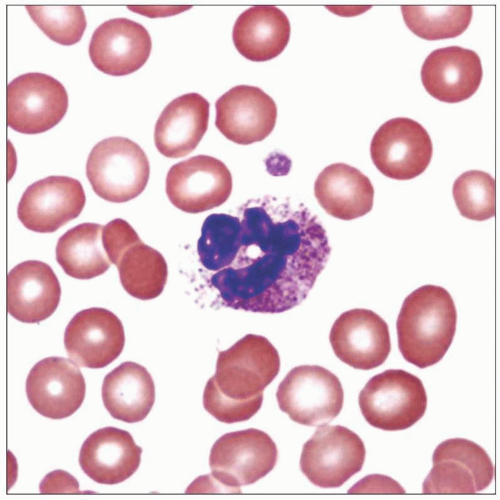Pregnancy-associated Hematologic Disorders
Kathryn Foucar, MD
Key Facts
Terminology
Spectrum of hematologic disorders may manifest during pregnancy
Some hematologic manifestations are physiologic
Dilutional anemia
Pathologic processes include
Thrombophilia
Nutritional deficiencies
Microangiopathic thrombocytopenia in DIC-like preeclampsia/eclampsia/HELLP syndrome
Microangiopathy in TTP-like and atypical HUS-like disorders
Pure red cell aplasia/aplastic anemias
Hematologic and nonhematologic neoplasms may manifest during pregnancy
Etiology/Pathogenesis
Most, if not all, microangiopathies with thrombocytopenia have DIC component as final pathway with multiple different triggering events
ADAMTS13 deficiency in pregnancy-associated TTP-like disorders
Clinical Issues
Hematologic disorders can manifest throughout pregnancy and post partum
Folate or vitamin B12 deficiency due to restricted diets
Potential for significant complications for fetus and neonate
< 0.1% of pregnancies complicated by neoplasm
Must factor risks to fetus in all treatment decisions
 Peripheral blood smear is from a patient who had both benign gestational thrombocytopenia and iron deficiency anemia. Iron deficiency anemia is the most common anemia encountered during pregnancy. |
TERMINOLOGY
Definitions
Spectrum of hematologic disorders may manifest during pregnancy
Some hematologic manifestations are physiologic
Dilational anemia secondary to increased plasma volume
Relative prothrombotic coagulation profile (hypercoagulable state of pregnancy)
Benign gestational thrombocytopenia
Some hematologic disorders result from increased requirements during gestation
Iron deficiency anemia
Folate deficiency anemia
Vitamin B12 deficiency anemia
Some hematologic disorders are result of pregnancyassociated pathologic processes
Thrombophilia: Usually venous thromboembolism
Microangiopathic thrombocytopenias in preeclampsia/eclampsia/HELLP (Hemolysis, Elevated Liver enzymes, Low Platelets)
Other microangiopathies with thrombocytopenia: Thrombotic thrombocytopenic purpura (TTP), atypical hemolytic uremic syndrome (aHUS), amniotic fluid embolism, placental abruption/previa, retained fetus
Other less common pregnancy-associated thrombocytopenias: Immune-mediated thrombocytopenia, acute fatty liver of pregnancy
Pure red cell aplasia
Aplastic anemia of pregnancy
Hematologic and nonhematologic neoplasms may manifest during pregnancy
Chronic myeloid neoplasms
Acute leukemias
Hodgkin and non-Hodgkin lymphomas
Carcinoma
Melanoma
Rare chronic lymphoid leukemias
ETIOLOGY/PATHOGENESIS
Pathophysiology
Nutritional anemias are the consequence of increased requirements and inadequate intake
No unique pregnancy-specific factors other than increased requirements
Disseminated intravascular coagulation (DIC) syndrome-associated disorders
Most, if not all, microangiopathies with thrombocytopenia have DIC component as final pathway with multiple different triggering events
Placental factors include ischemia, inadequate vasculature, likely mutations in cofactor proteins
HELLP syndrome
Preeclampsia/eclampsia
Other likely DIC triggering events
Amniotic fluid embolism
Acute fatty liver of pregnancy (also factor production defects)
Placental abruption/previa
Retained fetal demise
Septic abortion/other intrauterine infections
Postpartum hemorrhage
ADAMTS13 deficiency
Leads to persistence of large von Willebrand factor multimers, which interact with platelets producing microthrombi
TTP
Mutations in genes in complement pathway
Implicated in aHUS
Gain of function mutation of alternative complement pathway
Defect in mitochondrial oxidation of fatty acids
Implicated in acute fatty liver of pregnancy
Immune-mediated platelet survival defect
Stay updated, free articles. Join our Telegram channel

Full access? Get Clinical Tree





